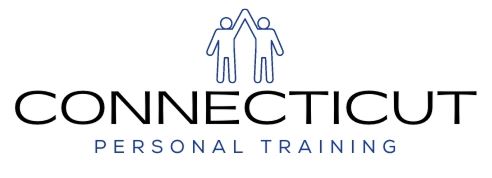For athletes, first step quickness refers to that first part of acceleration from a stopped position, and is crucial in every sport. Softball and baseball players use it when running the bases or chasing after a ball, football players use it to get off the line quicker, track athletes use it to get off the blocks faster. An athlete who can accelerate faster than their opponents will have a clear advantage. Our goal here at CT Personal Training is to give every athlete the best possibility to have that advantage. There are three crucial elements that encompass a complete routine to improve acceleration. These three elements are proper movement patterns; sprint training; and carefully chosen strength training. Using an in depth evaluation we can determine incorrect movement, tight and weak muscles and which sprints drills are proper for the individual athlete. Using this evaluation we will choose from a wide array of techniques and drills to improve first step quickness.
The first step to understanding proper acceleration is to understand the body’s proper bio mechanics. Proper movement dictates that as one leg/hip flexes the opposite leg/hip will extend. Simultaneously, as the legs move the opposite arm will move in cross-movement pattern. This is most obviously seen in babies as they start to crawl. As one leg moves forward the opposite arm will move forward at the same time, this repeated movement will propel the baby forward. This same movement is meant to stay with a person as they age, but over time the majority of people learn incorrect movement patterns. Because the body is meant to work efficiently in a specific movement pattern, the correction to improve an athlete’s speed is to fix their form and movements. We do this by using drills such as: a hand-picked dynamic warm-up (skips, jogs, etc.) that matches the actions of running and focuses on proper opposite leg and arm movements. We can also do various hurdle and agility ladder drills where the emphasis is always proper arms swing, knee drive, and opposite leg and arm. An untrained athlete goes through 4 phases of learning a new movement pattern. The first is when an athlete move incorrectly but is unaware of it; the next the athletes is aware of the correct form but is still struggling to perform the proper action; following the second phase the athlete learns how to move correctly but needs to consciously think about it; the final step is when the athlete is created a new correct movement pattern and it has become a natural action. A good personal trainer in Connecticut & strength and conditioning coach’s job is to guide an athlete through these four phases.
For acceleration and the first few moments of building to optimal speed, the goal is to limit the number of steps between point A and point B. Once proper movement has been established to goal is to generate as much power as possible with each stride. The harder an athlete strikes the ground while running the further the athlete will be propelled with each stride. We call this stride length. To increase this stride length we perform drills such as resisted runs where an athlete runs dragging a weight. With the increased weight an athlete is forced to drive each leg into the ground harder to move forward. As the athlete adjusts to weight they will have development a harder ground strike that will increase the athletes speed when resistance is removed.
The final step to increasing acceleration is proper weight training. During an evaluation it is necessary to discover muscular tightness and weaknesses that can inhibit proper running technique. A tight chest and shoulders can negatively affect proper arm swing, tight insides or outside of the hip and legs coupled weaknesses of the opposite part of the hip and legs will create inefficient leg actions. More than just creating inefficient movement patterns these findings can also lead to injuries. It is our necessity to fix these inefficiencies with proper weight training. Fixing these inefficiencies alone can improve an athlete’s speed. We also focus on exercises that match the actions of running. We can use an exercises such as the power clean which emphasis extension of the hip, knee, and ankle (known as triple extension). This triple extension is the same action the legs go through while running. We can also strength train the glutes, hamstrings, and quads which are all necessary in sprinting. The stronger we can make these muscles the faster athlete will be.
When combining these three aspects of speed training an athlete can make incredible strides in their first step quickness. With these improvements in acceleration athletes will notice huge improvements in performance, no matter what the sport. First step quickness gets you from home to first faster; gets you to the soccer ball faster when it has gotten loose; and will let the wide receiver beat the defensive back in football. If you would like to learn more about getting faster or have your athlete make huge improvements in first step quickness and speed, contact CT Personal Training today!



